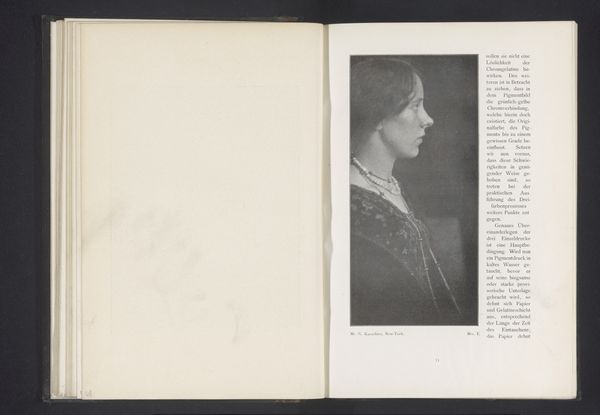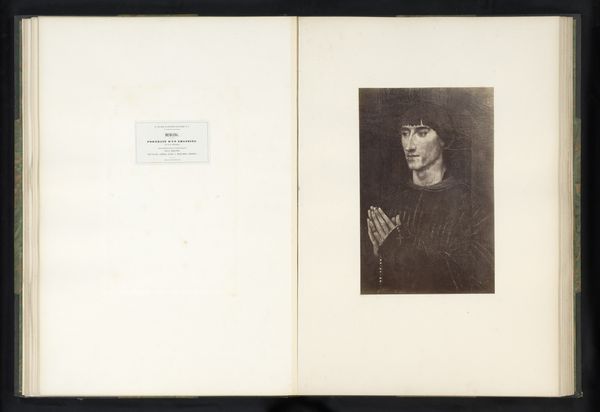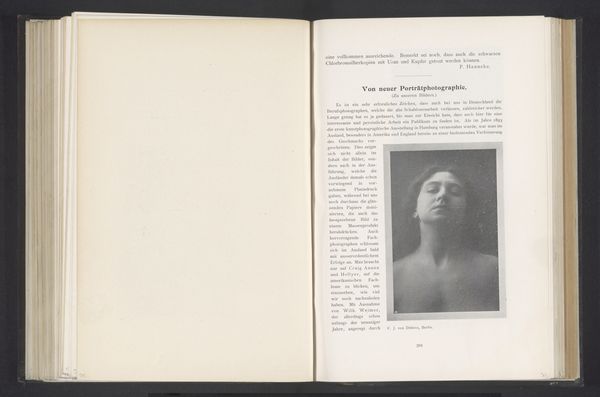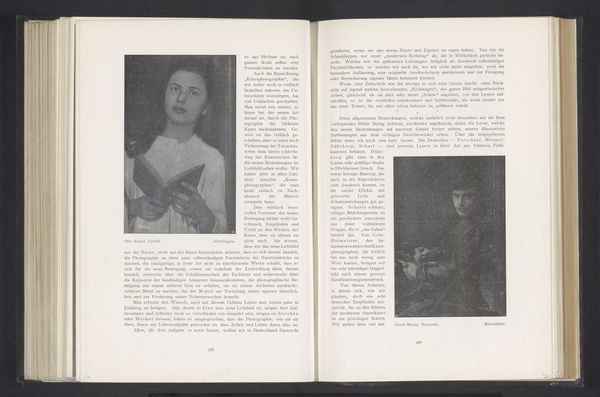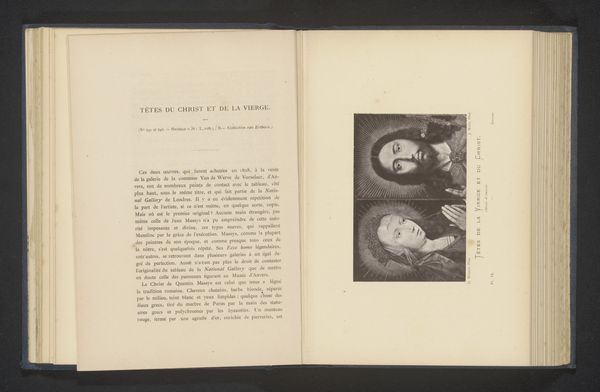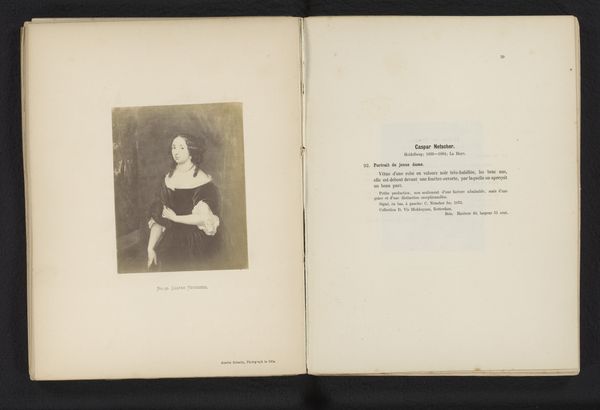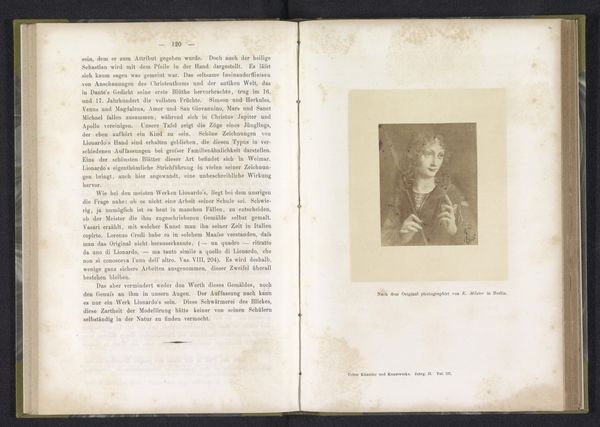
photography, gelatin-silver-print
#
portrait
#
type repetition
#
aged paper
#
pictorialism
#
paperlike
#
typeface
#
photography
#
journal
#
stylized text
#
gelatin-silver-print
#
thick font
#
handwritten font
#
thin font
#
small font
Dimensions: height 165 mm, width 88 mm
Copyright: Rijks Museum: Open Domain
Curator: Here, we’re looking at an open book, before 1903, featuring Mathilde Weil’s "Portret van een onbekende vrouw," a gelatin-silver print rendered in the soft-focus style of Pictorialism. What catches your eye about it? Editor: A melancholy vibe washes over me. Like she's a ghost pressed between the pages of time. The grayscale tones and grainy texture amplify that sense of distant beauty, or maybe a fleeting dream… Curator: Absolutely, that wistful mood connects deeply to the Pictorialist movement, where photography aspired to the painterly aesthetics then en vogue. Think about how Weil, a woman artist, would have navigated the male-dominated art world using this expressive approach to validate the photograph as high art. Editor: The softness feels almost defiant, actually. Like a quiet rebellion against the clinical precision photography was known for. Also, is it me or does the printing within the book and this picture on the opposite page offer an unintentional comment on... reproduction itself? Like a layered story being retold and re-seen? Curator: I agree entirely! Consider that women are often placed in conversation with "reproduction," in so many arenas. The visual effect does highlight the interplay between subject, artistic intention, and the mechanical reproduction of imagery – asking viewers to reconsider what it means for an image to be “real” or “authentic” at all. How can the lens reflect truth? Does the lens itself influence "truth?" Editor: That's amazing to think about! The gaze we typically expect from photography seems disrupted by Mathilde's almost ghostly filter. And now that you mention Mathilde Weil--another layer entirely! Who was she? Curator: Weil was born in Germany and worked throughout Europe. As an artist operating at the turn of the century, she often utilized portraiture to engage themes around identity, social position, and cultural aesthetics. She became part of both European and American photographic communities and cultivated a style focused on the emotional resonance of images, even when presented as documentary in nature. Editor: Makes you wonder what she would make of us looking at her photo right now. What future did she see for images and identity? Heavy. Well, for a silent picture, it sure sparked some words! Curator: Indeed! The act of interpretation breathes new life into these works, allowing us to connect the past to present and consider how history still shapes our views.
Comments
No comments
Be the first to comment and join the conversation on the ultimate creative platform.



